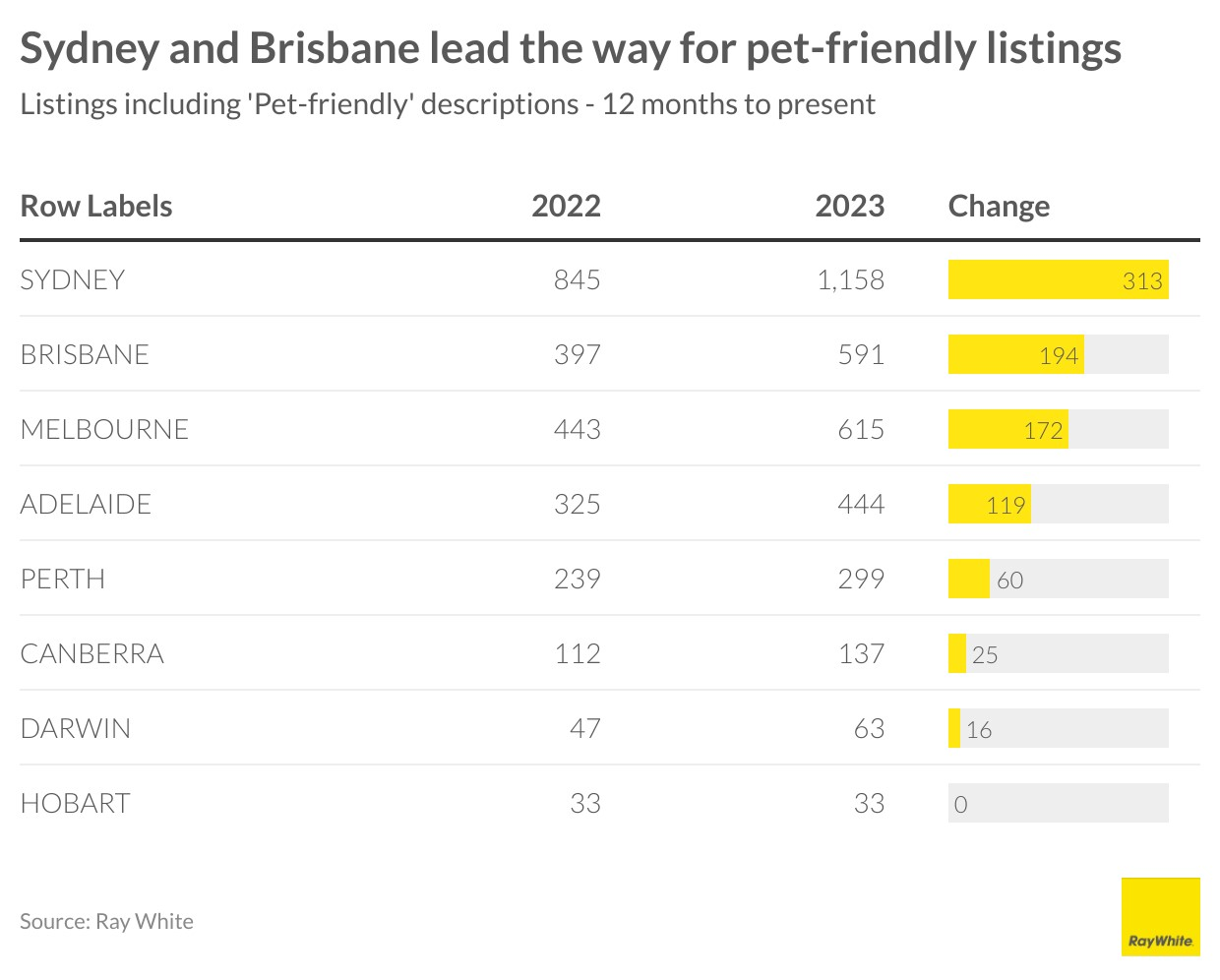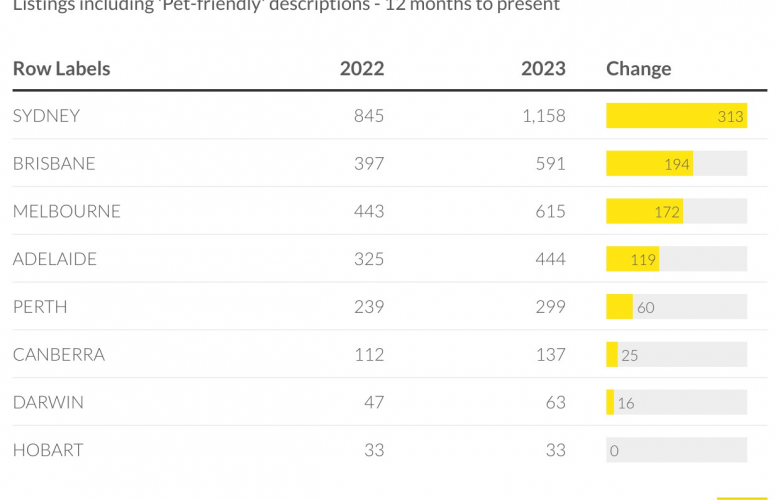Pet-friendly properties on the rise - Ray White
Contact
Pet-friendly properties on the rise - Ray White
According to William Clark, Ray White Data Analyst, the more a state favoured the landlords’ right to refuse pets from the property, the more frequently other landlords would express the opposite sentiment and advertise a pet-friendly property.
Last year we looked at how often listings advertised that pets were welcome to all tenants. It found that the more a state favoured the landlords’ right to refuse pets from the property, the more frequently other landlords would express the opposite sentiment and advertise a pet-friendly property. It makes sense to advertise this way as a landlord, as you will immediately get more interest from pet-owning prospective tenants than if you were in a state where pets are allowed in rentals as a default position.
So what has changed? There have been a few rule changes, and in the last 12 months landlords have gotten much more bargaining power in the housing shortage that has recently come about. We can see in the chart below that almost all cities have seen huge growth in pet friendly listings, which is encouraging to see with pet ownership in households up to 69 per cent and rising. The data below shows industry-wide listings as well as Ray White listings.

Sydney again leads the way for pet-friendly listings, though the size of the market and the meaningfulness of a phrase like ‘pet-friendly’ in a listing is highest in New South Wales. Tenants are required to ask permission to have the pet on the premises they are renting, and there is no obligation for the landlord to say yes, or have any reason for not approving.
This is also the case with Perth and South Australia, where lower pet-friendly listings reflect the smaller markets. Northern Territory similarly allows landlords to choose whether pets reside with their tenants, but must reply to a tenants letter of intent to house a pet within 14 days of notification to reject the pet. It is worth noting that the laws in Perth are currently up for review.
Victoria, Queensland, Tasmania and the ACT do not grant landlords automatic right to refuse pets on their property, and rejecting a pet application requires a department-approved reason to do so. Victoria requires landlords to go one step further and apply to the VCAT and get permission to refuse the pet within 14 days of receiving the tenants request for a pet. While Queensland also requires a reply within 14 days, there is no independent oversight over the reason the landlord gives for a refusal like the VCAT provides in Victoria.
By William Clark, Ray White Data Analyst.
Related Reading:
Price growth takes a breather, but not everywhere says Ray White Chief Economist






